Router Tool Safety Tips: Protect Yourself and Your Work
When it comes to woodworking, the router tool is a versatile and indispensable companion. However, it’s crucial to prioritize safety while working with this powerful tool to avoid any potential hazards. In this blog post, we will dive into the essential safety measures, equipment, and techniques necessary to minimize risks associated with the router tool. Whether you’re a seasoned woodworker or just getting started, understanding the hazards, proper handling, and safe operation practices are paramount to ensuring both your safety and preserving the integrity of your projects. Join us as we explore the key aspects of router tool safety.
Understanding Router Tool Hazards
When it comes to woodworking, a router tool is an essential piece of equipment. It allows you to create intricate designs, smooth edges, and hollow out areas in your workpiece. However, like any power tool, using a router tool comes with its own set of hazards. It is important to be aware of these hazards and take the necessary precautions to ensure safety in your workshop.
1. Dust and debris: One of the main hazards of using a router tool is the production of dust and debris. As you work on your project, the router will generate fine particles that can be harmful if inhaled. To protect yourself, always wear a dust mask and make sure your workspace is well-ventilated. Additionally, keep the area clean by using a dust collection system or vacuum to minimize airborne particles.
2. High-speed rotation: Another hazard of a router tool is the high-speed rotation of the router bit. The sharp cutting edges of the bit can cause serious injuries if not handled properly. Always make sure to turn off the router and wait for it to come to a complete stop before changing the bit or making any adjustments. When routing, maintain a firm grip on the tool and avoid any sudden movements that may lead to accidents.
3. Kickback: Kickback occurs when the workpiece gets caught on the router bit and is thrown back towards the operator. This can happen if the router bit is dull, the workpiece is improperly secured, or if you are feeding the material too quickly. To prevent kickback, ensure that the router bit is sharp and securely fastened, use push sticks or featherboards to guide the workpiece, and feed the material at a steady pace.
In conclusion, understanding the hazards associated with using a router tool is crucial for your safety in the workshop. Take the necessary precautions to protect yourself from dust and debris, be mindful of the high-speed rotation of the router bit, and prevent kickback by using proper handling techniques. By following these guidelines, you can enjoy the benefits of using a router tool while minimizing the risks involved.
Keywords: router tool hazards, woodworking safety, dust and debris, high-speed rotation, kickback, safety precautions, workshop safety.
| Dust and Debris | High-Speed Rotation | Kickback |
|---|---|---|
| Wear a dust mask and ensure proper ventilation | Turn off router before changing bits, maintain a firm grip | Ensure sharp and secured router bit, use push sticks or featherboards |
| Utilize dust collection system or vacuum | Avoid sudden movements | Feed material at a steady pace |
Essential Safety Equipment for Router Tool
When using a router tool, it is essential to prioritize safety at all times. One of the key ways to ensure safety is by using the appropriate safety equipment. By investing in the right safety gear, you can significantly reduce the risk of accidents and injuries while operating a router tool. In this blog post, we will discuss the essential safety equipment that every user should have when working with a router tool.
First and foremost, protective eyewear is an absolute must-have when using a router tool. The high-speed rotation of the router bit can create a lot of dust, debris, and wood chips, which can pose a serious risk to your eyes. Therefore, wearing safety goggles or safety glasses is crucial to protect your eyes from potential hazards.
Another important safety equipment is hearing protection. Router tools produce loud noise levels that can cause hearing damage if proper precautions are not taken. Wearing earplugs or earmuffs can help minimize the risk of noise-induced hearing loss, especially if you are using the router tool for extended periods.
In addition to eye and ear protection, respiratory protection is also essential when working with a router tool. The dust and fine particles generated during routing operations can be harmful if inhaled. It is recommended to use a dust mask or a respirator that is designed to filter out airborne particles. This will help protect your lungs and respiratory system from potential health issues.
Furthermore, proper clothing is a crucial aspect of router tool safety. Avoid loose-fitting clothing or jewelry that can get caught in the router or the workpiece. Long hair should be tied back securely to prevent it from getting entangled in the tool. Wearing non-slip shoes or boots is also important to maintain stability and prevent accidental slips or falls.
To summarize, when using a router tool, it is imperative to have the necessary safety equipment to protect yourself from potential hazards. This includes wearing protective eyewear, hearing protection, respiratory protection, and appropriate clothing. By taking these safety measures, you can ensure a safer and more enjoyable experience when working with a router tool.
Proper Handling and Grip Techniques
When it comes to using a router tool, proper handling and grip techniques are crucial for both safety and precision. By understanding how to handle the tool effectively, woodworkers can minimize the risks of accidents and ensure smooth, accurate cuts. In this blog post, we will discuss the importance of proper handling and grip techniques when using a router tool.
First and foremost, it is essential to maintain a firm grip on the router tool at all times. This can be achieved by utilizing both hands to hold the tool firmly in place. By using your dominant hand to hold the main handle and your non-dominant hand to support the router, you can establish better control and stability during operation.
Additionally, it is crucial to position your hands in a way that keeps them away from the cutting area. Placing your hands too close to the router bit can result in serious injuries if the tool slips or if you accidentally contact the spinning blade. Always keep your hands on the handles and avoid reaching across the workpiece while the router tool is in motion.
Furthermore, using safety equipment such as gloves and goggles can provide an extra layer of protection. Gloves help improve grip and reduce the chances of accidental slips, while goggles shield your eyes from any flying debris or wood chips that may be generated during the routing process.
- Proper grip: Utilize both hands to firmly hold the router tool.
- Hand positioning: Keep your hands away from the cutting area to avoid injuries.
- Safety equipment: Wear gloves and goggles for added protection.
| 1. Maintain a firm grip on the router tool using both hands. |
| 2. Keep your hands away from the cutting area to prevent accidents. |
| 3. Use safety equipment such as gloves and goggles. |
By following these proper handling and grip techniques, woodworkers can significantly reduce the risk of accidents and ensure safer operation when using a router tool. Remember to always prioritize safety and take the necessary precautions to protect yourself and your workpiece.
Safe Operation Practices for Router Tool
The proper operation of a router tool is crucial to ensure safety in woodworking tasks. The powerful and versatile nature of a router tool demands careful handling and a deep understanding of its operational practices. In this blog post, we will discuss some essential safe operation practices for using a router tool.
1. Familiarize Yourself with the Router Tool: Before using a router tool, it is important to read and understand the manufacturer’s manual. Get acquainted with the various parts, controls, and functions of the router tool. This will help you operate it safely and effectively.
2. Wear Appropriate Safety Equipment: Always wear the necessary safety equipment while operating a router tool. This includes safety glasses or goggles to protect your eyes from flying debris, a dust mask to prevent inhalation of fine particles, and ear protection to minimize noise-related hearing damage.
3. Maintain a Firm Grip: Maintain a firm grip on the router tool at all times. Use both hands to control the router, ensuring a steady and secure handling. This will provide better control and reduce the risk of accidents.
To further enhance safety and productivity, it is important to follow a set of best practices during router tool operation. Here are some additional practices to keep in mind:
- Secure the Workpiece: Make sure the workpiece is securely clamped or held in place. This prevents the workpiece from moving during operation and reduces the potential for accidents.
- Start at a Low Speed: When starting the router, begin at the lowest possible speed setting. Gradually increase the speed as necessary, depending on the task at hand. This helps avoid sudden jerks and promotes smoother operation.
- Move Against the Bit Rotation: Always move the router against the rotation of the bit. This provides better control and avoids kickbacks that may occur when moving in the same direction as the bit rotation.
- Avoid Overloading: Do not overload the router tool by removing too much material in a single pass. Take multiple shallow passes instead, allowing the router bit to cut more efficiently and preventing strain on the tool.
While operating a router tool, it is essential to constantly prioritize safety. By following these safe operation practices, you can minimize the risk of accidents and ensure a more enjoyable woodworking experience.
| Safety Tips for Router Tool Operation: |
|---|
| 1. Familiarize yourself with the router tool |
| 2. Wear appropriate safety equipment |
| 3. Maintain a firm grip on the router tool |
| 4. Secure the workpiece before operation |
| 5. Start at a low speed and gradually increase |
| 6. Move against the bit rotation |
| 7. Avoid overloading the router tool |
Protecting Your Workpiece from Router Tool Damage
When using a router tool, it is important to not only focus on your safety but also on protecting your workpiece from potential damage. Router tools can be powerful and can easily cause accidents or ruin the material you are working on. Therefore, in order to ensure the longevity and quality of your workpiece, it is crucial to take certain precautions and use specific techniques to minimize the risk of damage.
First and foremost, it is essential to choose the right router bit for the desired task. Different router bits are designed for specific purposes, such as cutting, shaping, or edging. Using the wrong bit can lead to rough or uneven cuts, which can permanently damage your workpiece. Take the time to research and select the appropriate router bit that matches your project requirements.
Another important step in protecting your workpiece is to use suitable router speed and depth settings. Adjusting the speed and depth of the router tool according to the material you are working on is crucial. Cutting too deep or using excessive speed can lead to tear-out, which not only damages the piece but also affects the overall aesthetics. Always start with a slower speed and shallow depth, gradually increasing them until you achieve the desired result, while monitoring for any signs of damage or difficulty.
Using proper technique and maintaining a steady grip on the router tool can also help prevent workpiece damage. When using a handheld router tool, always hold it firmly with both hands and keep it stable throughout the cutting process. Applying excessive force or making sudden movements can cause the router tool to slip or tilt, resulting in unwanted gouges or scratches on the workpiece. Maintaining a steady grip and using controlled movements will help ensure smooth, precise cuts without damaging the material.
List of Tips for Protecting Your Workpiece from Router Tool Damage:
- Choose the right router bit for the task
- Adjust router speed and depth according to the material
- Maintain a steady grip and control the movements of the router tool
- Secure the workpiece properly to prevent movement or vibrations
- Use appropriate cutting techniques, such as climb cutting or conventional cutting, depending on the material
- Regularly inspect and replace worn-out router bits to ensure clean and accurate cuts
Table: Router Bit Selection Guide
| Router Bit Type | Common Uses |
|---|---|
| Straight Bit | Rout straight lines, create dados and grooves |
| Flush Trim Bit | Trimming edges or templates flush with the material |
| Rabbeting Bit | Create rabbet joints or recesses along the edge of the material |
| Roundover Bit | Create rounded edges or decorative profiles |
| Cove Bit | Create concave edges or profiles |
By following these guidelines, you can significantly reduce the risk of damaging your workpiece while using a router tool. Taking the necessary precautions, such as choosing the right bit, adjusting the settings, and applying proper techniques, will not only protect your project but also enhance the overall quality and finish. Remember, investing time and effort in protecting your workpiece will ultimately lead to satisfying and successful woodworking results.
Frequently Asked Questions
What are some potential hazards associated with router tools?
Potential hazards associated with router tools include kickback, electrical hazards, and flying debris.
What safety equipment is essential when using a router tool?
Essential safety equipment for using a router tool includes safety glasses, hearing protection, and dust masks.
What are some proper handling and grip techniques for using a router tool?
Proper handling and grip techniques for using a router tool include maintaining a firm grip on the handles and keeping your hands away from the cutting area.
What are some safe operation practices for using a router tool?
Safe operation practices for using a router tool include routing in the correct direction, making multiple shallow passes instead of a single deep cut, and using a router table when possible.
How can you protect your workpiece from damage when using a router tool?
To protect your workpiece from damage when using a router tool, you can use sacrificial boards, edge guides, and clamp your workpiece securely.
What factors should be considered when choosing a router bit for a project?
When choosing a router bit for a project, factors to consider include the type of material you are working with, the desired cut or shape, and the speed and power of your router.
What are some maintenance and cleaning tips for router tools?
Maintenance and cleaning tips for router tools include regularly inspecting and replacing worn or damaged parts, lubricating moving parts, and keeping the router and its accessories clean from debris.

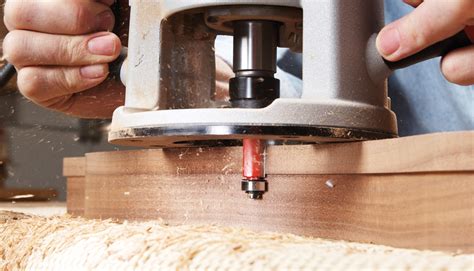
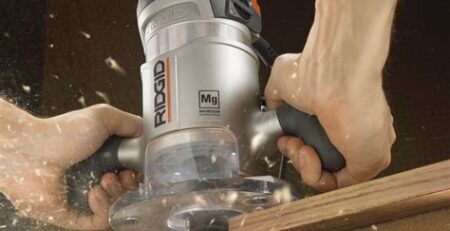

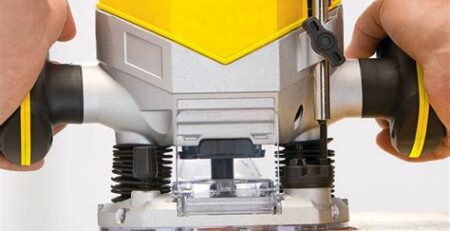

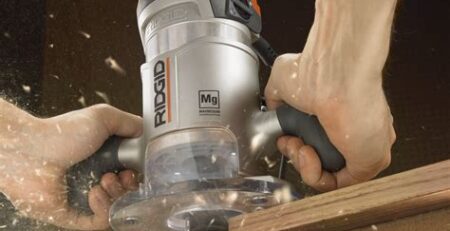

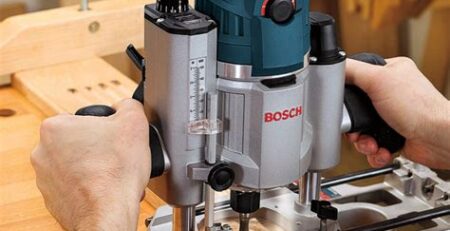
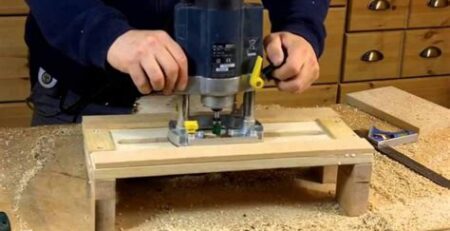
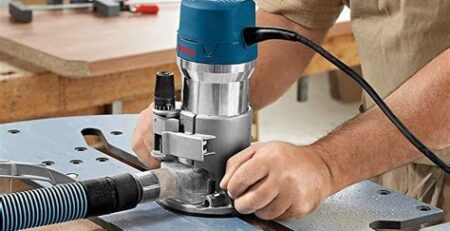


Leave a Reply